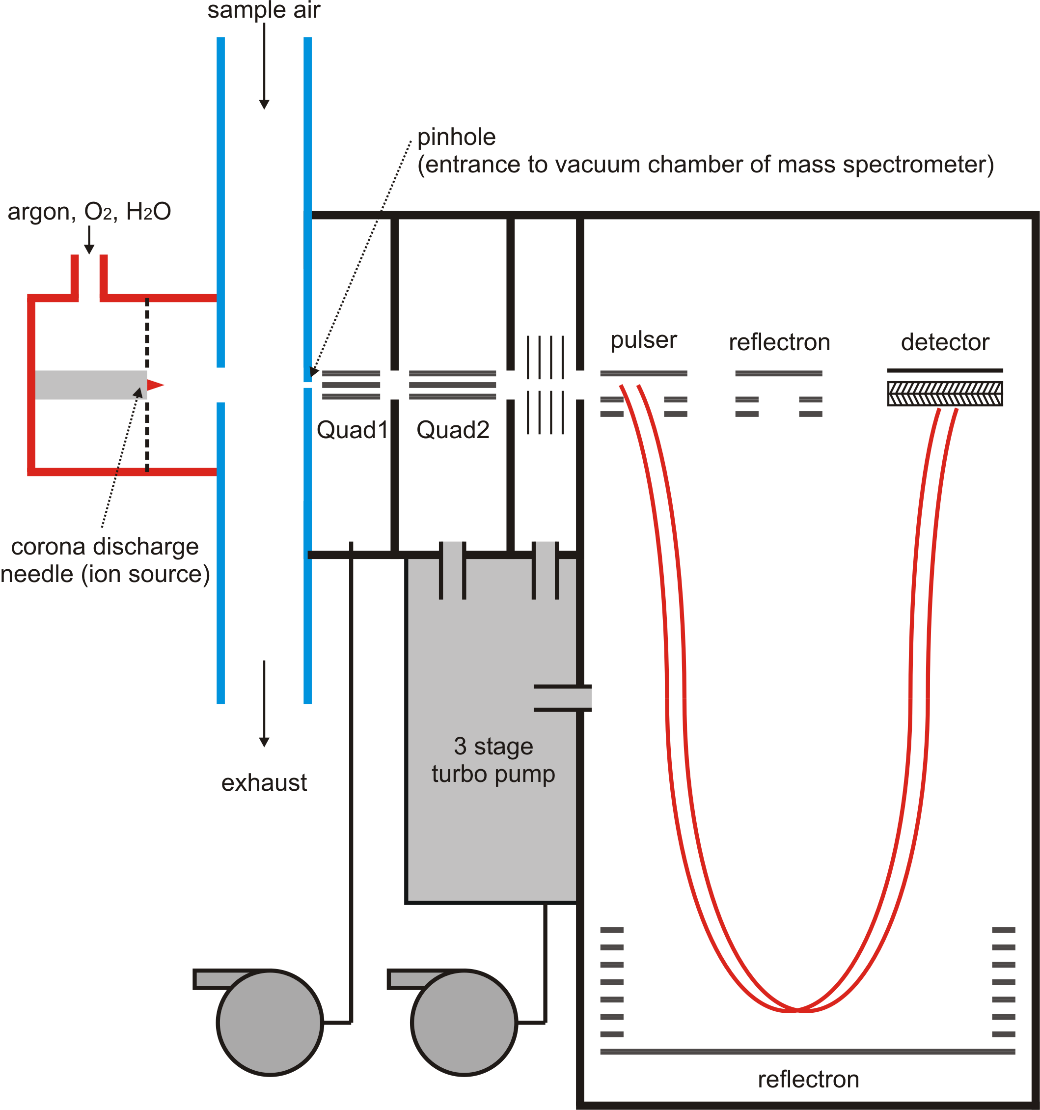water cluster CI-APi-TOF
Water cluster Chemical Ionization-Atmospheric Pressure interface-Time Of Flight Mass Spectrometer (water cluster CI-APi-TOF)
 Ammonia (NH3) is an important atmospheric trace gas that is mainly emitted due to agricultural activity. It can partition to the aerosol phase and is one of the most important compounds contributing to secondary aerosol formation. However, ammonia is not only partitioning to existing particles, it can also be involved in the very first steps of new particle formation (nucleation) because it can stabilize newly-formed clusters in ternary (sulfuric acid-water-ammonia) and quaternary (sulfuric acid-water-ammonia-highly oxygenated organic molecules) systems (Kirkby et al., 2011; Kürten et al., 2016; Lehtipalo et al., 2018). Other basic compounds like amines or diamines, together with sulfuric acid, have been shown to enhance nucleation rates even stronger compared with ammonia despite their much lower atmospheric concentrations (Almeida et al., 2013; Kürten et al., 2014).
Ammonia (NH3) is an important atmospheric trace gas that is mainly emitted due to agricultural activity. It can partition to the aerosol phase and is one of the most important compounds contributing to secondary aerosol formation. However, ammonia is not only partitioning to existing particles, it can also be involved in the very first steps of new particle formation (nucleation) because it can stabilize newly-formed clusters in ternary (sulfuric acid-water-ammonia) and quaternary (sulfuric acid-water-ammonia-highly oxygenated organic molecules) systems (Kirkby et al., 2011; Kürten et al., 2016; Lehtipalo et al., 2018). Other basic compounds like amines or diamines, together with sulfuric acid, have been shown to enhance nucleation rates even stronger compared with ammonia despite their much lower atmospheric concentrations (Almeida et al., 2013; Kürten et al., 2014).
For these reasons, the accurate and sensitive measurement of ammonia, amines and diamines is important. However, their measurement is not trivial as the concentrations of some of the compounds, depending on their type and location, can be extremely small (sub-pptv-range, i.e., approximately 1 molecule in 1012 other air molecules). We use a chemical ionization time of flight mass spectrometer (CI-APi-TOF) and a newly-developed ion source that generates positively charged water clusters ((H2O)n≥1H3O+) for the selective detection of compounds with high proton affinity (ammonia, amines and diamines). The reagent ions are generated from a gas mixture (argon, water vapor and oxygen) and a corona discharge in positive mode. The reagent ions interact with the sample in front of the CI-APi-TOF inlet (pinhole); the reaction time is ~1 millisecond. The water cluster CI-APi-TOF has so far been deployed during several CLOUD experiments at CERN. The instrument is extremely sensitive and reaches detection limits in the single digit pptv-range for ammonia and in the sub-pptv range for amines. Another benefit of the instrument is a high time resolution (seconds) and fast response time to changing concentrations. The upper limit for the measurement is ~10 ppbv.



